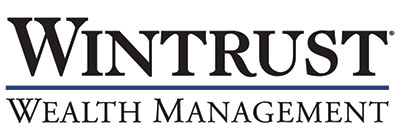Data tokens on this page
Financial Solutions
Financial Solutions
Rebalancing: The Swiss Army Knife for Investing
Scaling back appreciated equity positions can do more for you than reduce risk.
83% equity/17% bond: That is what the asset allocation would have been on November 27 for a portfolio that was 60% equity/40% bond when the current market rally began in March 2009, assuming that none of the positions had been added to or subtracted from over the eight-plus year holding period.
Needless to say, the portfolios of many hands-off investors are long overdue for rebalancing, reducing their equity allocations, and adding to their positions in safe securities like cash and bonds. Appropriate risk reduction is especially important for retirees and pre-retirees: Incurring big losses in a portfolio, especially early in retirement, can permanently impair a portfolio’s sustainability.
The good news is that rebalancing enables retirees to reduce risk in their portfolios while achieving other worthy goals as well: meeting in-retirement cash-flow needs, fulfilling required minimum distributions, and giving to charity.
Here is a closer look at why it is worthwhile to consider rebalancing
Reducing Risk
The base case for rebalancing is to reduce risk in your portfolio while bringing its asset allocation back into line with your targets. As noted, stocks are taking up a larger share of many portfolios than is ideal. Meanwhile, equity valuations are not what they were before. Shiller P/E, a gauge of market valuation that takes into account the cyclicality of corporate earnings, was 15 at the outset of stocks’ current rally. At the end of November this P/E was almost 32. Lofty equity valuations are a key reason why some market experts have suggested that investors employ muted return expectations for stocks in their portfolios.
Under a traditional rebalancing regimen, an investor would scale back on appreciated equity holdings following a market run up and move the proceeds into bonds. Of course, bonds do not compel right now, as yields are skimpy. But if an investor’s goal is to reduce risk in the portfolio, high-quality bonds should continue to serve their role as shock absorber, holding their ground or perhaps even gaining a bit in an equity market sell-off.
Meeting In-Retirement Cash Flows
Despite the recent uptick in yields, bonds still leave much to be desired for income-starved retirees. High-quality intermediate-term portfolios are currently yielding less than 3%; the yields you earn on high-quality shorter-term bonds are hardly any better than what you would earn by parking your money in the bank. That has sent many retirees moving out on the risk spectrum in search of higher payouts—into junk and emerging-markets bonds as well as high-yielding stocks.
Despite the challenging yield environment, one key source of in-retirement cash flows—though not strictly income—is hiding in plain sight: selling appreciated securities. While traditional rebalancing involves redeploying the proceeds from appreciated positions into parts of your portfolio that have not performed as well, you can also use your rebalancing proceeds to provide needed cash for the year ahead. Retirees can rely exclusively on rebalancing to meet their cash-flow needs (a “strict constructionist” total return approach), or they can use their portfolios’ organically occurring income distributions, along with rebalancing proceeds, to meet their cash flows. Of course, there may be years in which neither stocks nor bonds perform particularly well and are not ripe for rebalancing; that is the key reason to include a cash component and avoid having to sell depressed holdings to meet living expenses.
Raising Funds for RMDs
In a related vein, retirees who are post-age 70 1/2 can and should use rebalancing to help meet their required minimum distributions from their tax-sheltered accounts like IRAs. Those distributions, in turn, can be used to fund living expenses. One advantage of rebalancing within tax-sheltered accounts like your IRA is that your selling will not trigger any unnecessary tax bills. If you are rebalancing your retirement accounts to meet RMDs, for example, you will owe taxes on any money you withdraw, but no more than you otherwise would. And if you are not yet retired and rebalancing within your tax-sheltered accounts—that is, moving money from appreciated positions back into depressed ones within the same account—you will not owe any taxes at all to rebalance. By contrast, rebalancing within your taxable accounts should be a last resort because selling appreciated positions is apt to trigger a tax bill.
Making Charitable Contributions
Charitably-minded investors can also rebalance by steering appreciated positions to charity. Retirees who are age 70 1/2 or older can take advantage of qualified charitable distributions to send their required minimum distributions, up to $100,000 directly to the charity (or charities) of their choice. The virtue of that strategy versus taking the money out, paying taxes on it, and writing a tax-deductible check to the charity is that the QCD helps reduce adjusted gross income; keeping AGI down is the name of the game when determining a taxpayer’s eligibility for deductions and credits.
Investors of any age can rebalance their taxable accounts and steer a highly appreciated position directly to the charity of their choice. That strategy not only reduces risk in the portfolio by scaling back highly appreciated (and potentially overvalued) holdings, but it also helps remove the tax burden that comes along with that appreciated asset. Alternatively, investors can move the money into a donor-advised fund, obtain the tax deduction, and then take their time in deploying those assets to the charities of their choices.
© Morningstar 2018. All Rights Reserved. Used with permission.
Start the Conversation
Where will your financial journey take you? A Financial Advisor helps you navigate the terrain, avoid pitfalls, and keep you on track to achieve your financial goals.

